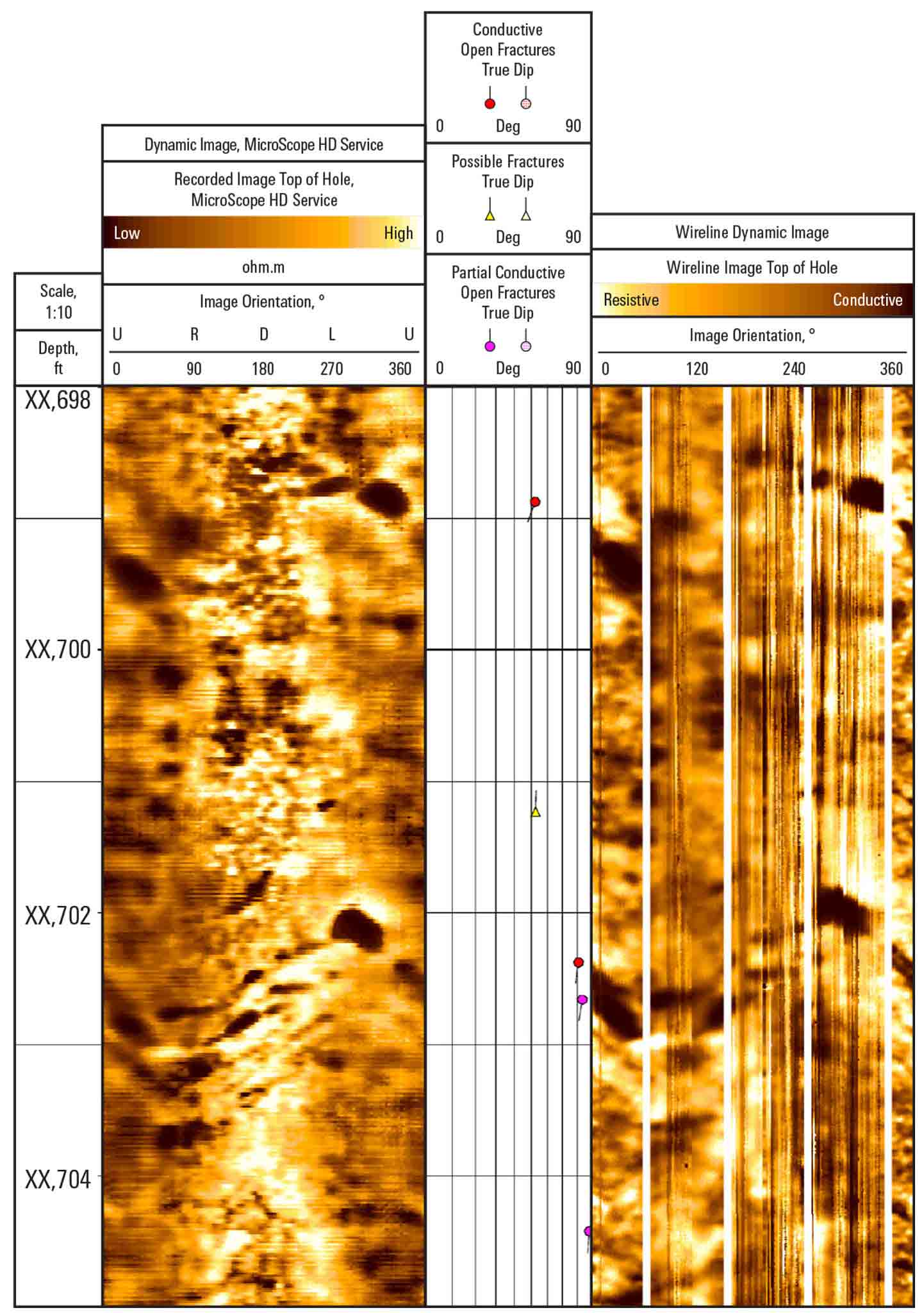Get high-resolution LWD imaging for structural analysis, sedimentology, and fracture characterization.
High-resolution LWD resistivity images used for reservoir structural analysis
Characterize highly fractured reservoirs for optimization of completion design while mitigating risk associated with wireline conveyance on extended-reach wells.
Mitigate borehole stability issues while acquiring images of fracture networks
Mabruk Oil Operations has been developing what is considered to be one of the most complex offshore fields in Libya due to gas and water breakthrough. The carbonate field is structurally complicated with complex fracture networks. Mabruk Oil Operations has developed the field with an innovative perforation strategy based on image interpretation to reduce gas as well as water breakthrough coming from faults and open fractures.
In previous operations, wireline-conveyed services were used to acquire images for designing perforations to avoid fractured intervals with aperture width smaller than 0.1 in. For the field, this method of conveyance had become complicated because of severe mud losses and borehole instability on extended-reach wells. Mabruk Oil Operations and SLB worked together to test a new LWD technology by running both wireline and LWD for validation of accuracy and to find a solution to minimize well stability risks in future wells.
Acquire high-resolution images for sedimentological analysis with LWD
SLB acquired high-resolution images with vertical resolution of 0.4 in while drilling which were used to use MicroScope HD™ high-resolution imaging-while-drilling service to describe highly fractured reservoirs for optimization of the perforation design, compare LWD images with wireline-conveyed images to verify viability of MicroScope HD service for high-resolution imaging, mitigate borehole stability issues while acquiring images of fracture networks, demonstrate relevance of LWD conveyance to image tough drilling environments, and perform a full sedimentological and structural analysis of the reservoir.
In the same 6-in horizontal section of the well, the team acquired both wireline and LWD images to be used for sedimentological analysis. The LWD service was MicroScope HD high-resolution image-while-drilling service, which is capable of 0.4-in vertical-resolution resistivity images in water-base mud (WBM) environments. The wireline service used to validate the LWD imaging was logged on the TLC tough logging conditions system to enable measurements in the lateral drain. MicroScope HD service logged the well on wash-up mode.

Compare LWD and wireline images for perfect match
The images from MicroScope HD service matched the quality of the wireline images. Comparison of high-resolution LWD electrical images with the wireline images showed that many geological features of interest can be identified equally by both technologies. Natural fractures, bed boundaries, dissolution seams, and changes in carbonate texture were observed and distinguished on the LWD image in much the same way as on the wireline image.
Having both wireline and LWD imaging with comparable accuracy provides operating companies with flexibility in their formation evaluation acquisition programs.

